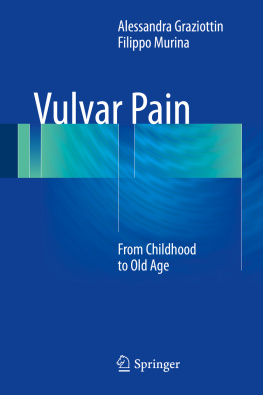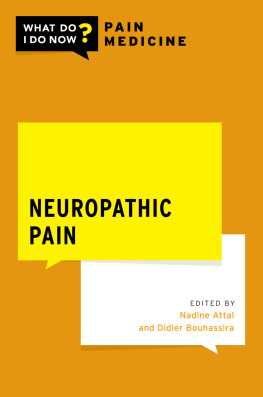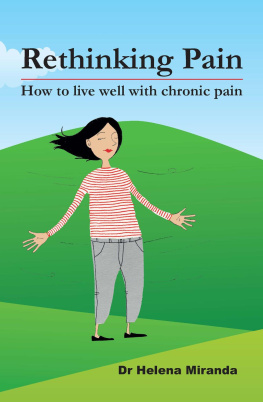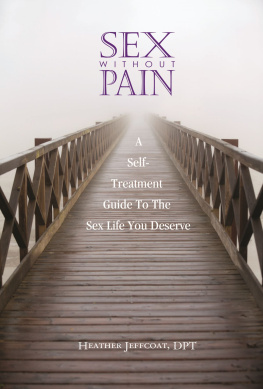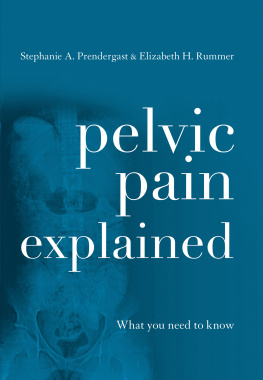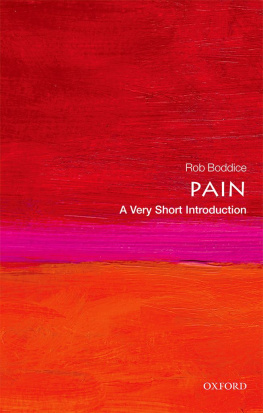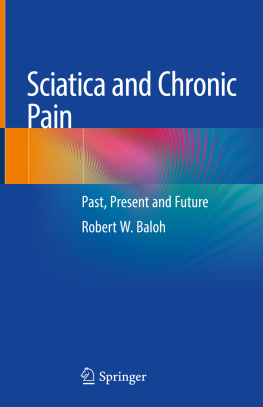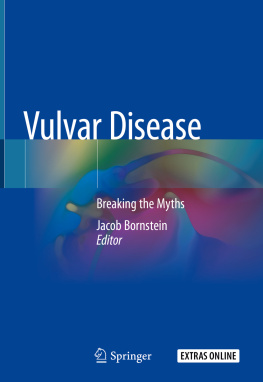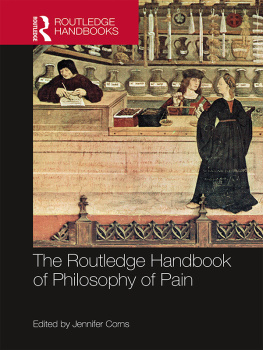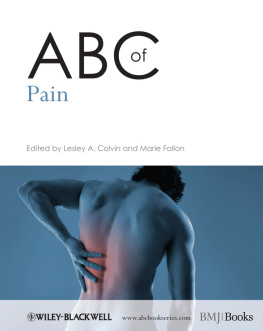Springer International Publishing Switzerland 2017
Alessandra Graziottin and Filippo Murina Vulvar Pain 10.1007/978-3-319-42677-8_1
1. Vulvar Pain: Whats Behind a Name
Alessandra Graziottin 1 and Filippo Murina 2
(1)
Center of Gynecology and Medical Sexology, San Raffaele Resnati Hospital, Milan, Italy
(2)
Lower Genital Tract Disease Unit V. Buzzi Hospital, University of Milan, Milan, Italy
Vulvar pain is a comprehensive term. Its main characteristics are described in Box .
Box 1.1. Vulvar Pain: Key Descriptors
Acute Vulvar Pain
Is referred to the vulvar organ , or part of it:
The vulvar vestibule ( vestibular pain )
The clitoris ( clitoral pain )
Localized vulvar pain in parts other than the vestibule or the clitoris ( localized vulvar pain ), i.e., affecting the left labia majora or right labia minora, or the Bartholin gland (Bartolinitis)
The entire vulva ( vulvar pain )
Has a precise , objective etiology , easy to be visualized , described , and recorded
Acute tissue inflammation is the common denominator , resulting, among others, from:
A trauma :
Unintentional , such as blunt lesions during sport or accidental falls, cutting, and burning, among others
Intentional , including sexual abuse and female genital mutilations/modifications (FGM/M)
Infections , such as in Candida vulvitis, in herpes virus, and in pyogenic abscesses or parasitic infections
Acute nerve traumas , such as mechanical traumas
An iatrogenic damage :
Chemical , during topical treatment with immunomodulants, or chemotherapy
Physical , such as after laser therapy, diathermocoagulation, and radiotherapy
Surgical , during episiotomy / episiorrhaphy , vulvar surgery (excisional or not), and cosmetic vulvar interventions
A painful acute skin disease
It is a defensive , alerting response to an acute damage, unintentional or intentional, to the vulvar region and organ:
Nociceptive , i.e., a sign of an ongoing acute damage
A friend signal , in some ways, indicating the urgent need to withdraw from the cause of pain, understanding, and treating it
It can be continuous or remitting , constant, or have a circadian rhythm .
Acute vulvar nociceptive pain is usually worse at night .
Objective findings include:
Vulvar skin and mucosa turning red
Vulvar edema / swelling
Vulvar increase in temperature
Vulvar pain , spontaneous or provoked at gentle touching
Impaired functions , including sexual symptoms (Graziottin ), cosmetic functions, and impossibility to behaviors such as stay seated or wearing tight trousers
Key Point
The acute inflammation underlying acute vulvar pain has three main characteristics. It is:
Resolving , i.e., finalized to restore the return to normality in terms of vulvar cytoarchitecture, anatomy, and function
Limited in time , usually within 3 months from the onset of traumatic agent
Limited in intensity , adequate and proportionate to cope with the ongoing tissue insult
Chronic Vulvar Pain
Time is the leading differentiating criteria: vulvar pain is defined as chronic when it persists more than 36 months , still maintaining most of the abovementioned characteristics.
Inflammation shifts progressively from physiologic to pathologic and tends to become anarchic, non-resolving, and of increasing and disproportionate severity (Graziottin et al. ).
Pathologic/Neuropathic Vulvar Pain
Pain progressively becomes a disease per se: symptoms of vulvar pain are included within the dynia group :
Vestibulodynia , when pain is referred to the vestibule
Clitorodynia , where pain is referred to the clitoris
Vulvodynia , where pain can be referred to part of it ( localized vulvodynia ) or to the entire organ ( generalized vulvodynia )
The vulvar skin and mucosal damage are no more objectively identifiable :
Peripheral inflammatory signs gradually disappear .
Central involvement of the CNS ( neuroinflammation ) becomes prominent , the common denominator of all types of pain becoming neuropathic (Haanp et al. ).
Vestibulodynia , clitoridynia , or vulvodynia can be spontaneous or provoked, with a remitting or persisting course.
Neuropathic vulvar pain usually disappears during night sleep.
Inflammation becomes pathologic and self - maintained by the upregulation of the immunitary system (with mast cells and microglia leading the pathophysiologic immunitary response) and the pain system (Graziottin et al. ). It is:
Not finalized , i.e ., non-resolving.
Persistent , chronic.
Of variable intensity.
Highly sensible to stressors , physical and emotional. They can upregulate the central inflammatory process with further worsening of the vulvar pain perception.
Treatment of neuropathic vulvar pain / vulvodynia and its subtypes is therefore oriented at modulating the CNS components of vulvar pain , while keeping attention to persistent vulvar trigger of pain, when present:
Relaxation of the tightened , hyperactive pelvic floor , either primarily or in response to the persisting pain, is a critical part of an effective treatment.
Avoidance of penetrative vaginal intercourse is essential , to avoid further microtraumas of the vulnerable introital mucosa, until vulvar pain is adequately addressed.
Antalgic peripheral treatment with temporary, periodic block of the Walter ganglion can be reserved to cases resisting to the standard treatment.
The goal of this chapter is to alert clinicians to devote more attention to this (still) neglected organ, the vulva, and to the leading symptom affecting it: pain, in the lifespan.
The rich innervation of the vulvar organ makes the vulvar pain particularly troublesome and invalidating. Its localization and multiple functions have complex implications on different aspects of the womans daily living. Its peculiar emotional significance further potentiates the meaning and impact of vulvar pain. The vulvas leading role in intimate seduction and erotic pleasure makes even more challenging and troubling the shift from pleasure to invalidating pain (Graziottin ).
Its leading role in the womans and couples sexuality gives to vulvar pain a (still) unappreciated potential for disrupting and devastating womens and couple lives. Healthcare providers (HCPs) should therefore consider the vulva, related sexual and nonsexual symptoms, and associated comorbidities, with the highest clinical diagnostic and therapeutic attention and care.

